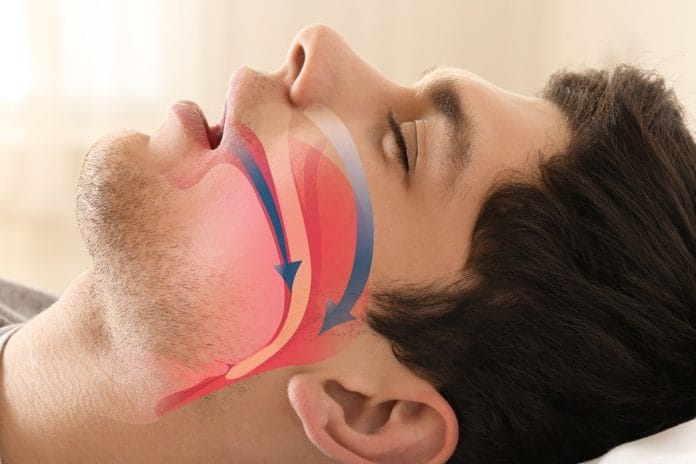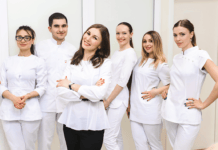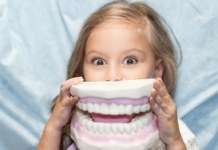Thankfully, I am a deep sleeper. I often joke that I die every night and resurrect every morning. I have been blessed with good sleep genes and require no assistance from the Sandman.
In addition, noises such as snoring (from my bed partner) have never disturbed me. The same cannot be said for my sister. She sleeps very lightly, and her eyes flutter open at the mere presence of an individual in her room. I never really knew my husband was suffering from obstructive sleep apnea (OSA) because I never witnessed or heard his disruptive sleep patterns, despite my sister’s complaints of his snoring when she visited.
Eventually, after expressing his symptoms to his primary care provider, he was properly diagnosed with sleep apnea. Unfortunately for many, this diagnosis doesn’t come soon enough, if ever.
Obstructive Sleep Apnea
Obstructive sleep apnea is a sleep disorder in which affected individuals have complete cessation in breathing or a severe reduction in airflow during sleep due to a repetitive closure of the airway. Globally, 100 million people are thought to have OSA, and an overwhelming 80% of them remaining undiagnosed.1 Of those, 22 million Americans suffer from this disorder.2
Many cases go undiagnosed because OSA is a gradual onset of symptoms, and many people are not aware of their sleep patterns because they sleep alone or a bed partner sleeps soundly. It isn’t until diurnal symptoms develop that people become concerned. OSA signs and symptoms include:
- Excessive daytime sleepiness
- Memory and concentration dysfunction
- Gastroesophageal reflux
- Behavioral irritability (depression, delirium)
- Accidents
- High blood pressure
- Snoring
- Apnea with limb movement
- Nocturnal sweating
- Dry mouth upon wakening
- Nocturia
- Edematous soft palate and uvula
- Long soft palate and/or uvula
- Maxillary hypoplasia
- Increased neck circumference
Can You Die from OSA?
Yes! The body will force an awakening when it senses that it is not getting enough oxygen during sleep. Therefore, you will never suffocate in your sleep as a result of sleep apnea.2 However, you can die from related complications, much like an individual with diabetes dies from the complications with the disease.
In fact, statistics show that 38,000 Americans die annually from heart disease directly complicated by sleep apnea.2 Even the rich and famous are affected and have died as a result of complications from sleep apnea. Of those known are Carrie Fisher (Star Wars), Reggie White (NFL player), John Candy (comedian), Jerry Garcia (Grateful Dead), and President William Howard-Taft.2
Noting OSA Symptoms in the Dental Setting
Many signs of OSA can be seen within the oral cavity and surrounding areas such as the neck. Dental professionals are afforded the opportunity to thoroughly evaluate the oral cavity. Therefore, it makes tangible sense for OSA evaluations to be integrated into routine hygiene appointments.
Clinicians can easily evaluate patients during oral pathology screenings for any signs that could be factors of sleep apnea. If needed, external resources can be useful, such a very quick two-minute screening developed by the University of Toronto called the STOP-Bang.1 The STOP-Bang is a questionnaire that tallies results to give the clinician an idea if the patient is at-risk. Dental professionals cannot diagnose OSA, but they can certainly recommend that a patient seek further treatment by having a sleep study to determine if OSA is present.
Children can suffer from obstructive sleep apnea as well. Underlying conditions for children are usually large tonsillar/adenoid regions and occasionally craniofacial anomalies and neuromuscular disorders.3 While adults are more likely to have excessive daytime sleepiness, children are more likely to have behavioral problems. Early prevention and diagnosis are important in children to prevent complications that can impact growth, cognitive development, and behavior.
Treatment
OSA is treated most commonly with continuous positive airway pressure (CPAP). However, some patients elect to have a surgery that removes the soft palate, adenoids, tonsils, and/or the uvula. For many, the compliance issue of wearing a mask nightly is a struggle.
Oral appliances or mandibular advancement devices are great alternatives for patients, specifically those who suffer with mild to moderate obstructive sleep apnea. Once properly diagnosed by their physician, patients can seek this form of treatment with permission. Dentists can make various devices that help bring the mandible forward and open the airway in the process.
Up until recently, these devices contained no way to monitor patients. However, some oral appliances are now incorporating microchips to measure patient compliance. It’s important to remind patients that these appliances will require replacement approximately every one to two years to maintain efficacy.4 Treatment for pediatric OSA is similar to an adult and sometimes includes orthodontics.
The dental professional is yet again afforded the opportunity to bridge the gap between medical and dental. By making ourselves aware of the many ways we can offer professional advice, we are able to assist patients in achieving optimal health. It is important to remember that many only frequent their medical doctors when health issues arise, but a larger amount do make it a healthy habit of seeing their dental professional on a routine basis. Dental professionals should take full advantage of every appointment and make it their goal to see beyond the teeth
Check out the Today’s RDH Dental Hygiene Podcast!
References
- The Official STOP-Bang Questionnaire Website. (2012). Toronto Western Hospital. The University of Toronto. Retrieved from http://stopbang.ca/osa/prevalence.php
- Yes, You Can Die from Sleep Apnea. Carrie Fisher Did. (2019). American Sleep Apnea Association. Retrieved from www.sleepapnea.org/carrie-fisher-yes-you-can-die-from-sleep-apnea/
- Children and Sleep Apnea. (2019). American Sleep Apnea Association. Retrieved from www.sleepapnea.org/children-and-sleep-apnea/
- Oral Appliance for Sleep Apnea Dental Device Therapy. (2019). American Sleep Association. Retrieved from www.sleepassociation.org/sleep-disorders/sleep-apnea/oral-appliance-for-sleep-apnea/












